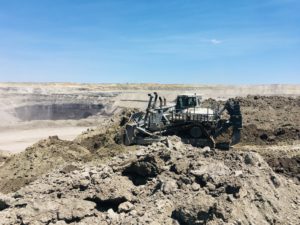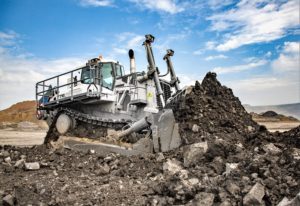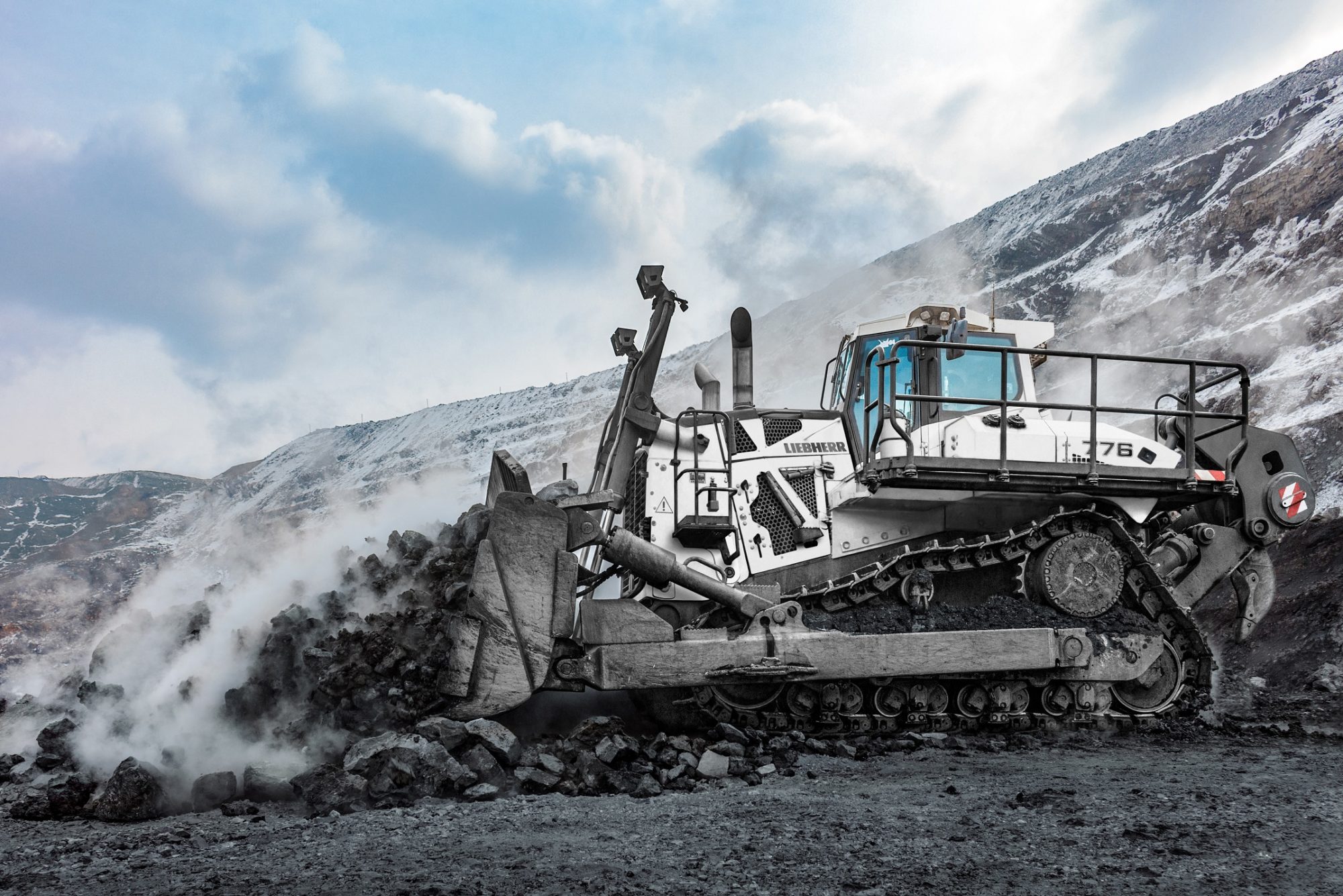Liebherr Group recently commissioned its 100th PR 776 Litronic crawler dozer, a major milestone for this machine, which was launched only in 2016 and is manufactured in Telfs, Austria. Paul Moore spoke to Liebherr Area Sales Manager, Max Muench, about the journey so far with the powerful machine, which is mainly used in the mining industry and uniquely for its 70 t class has a hydrostatic travel drive that ensures smooth operation and automatically adjusts the working speed to the load conditions.
Q What kind of split in sales have you seen out of these 100 units in terms of mining versus construction applications?
The majority of the PR 776 units that have been commissioned work in mines. They are used in a balanced commodity mix of coal, various ores such as iron, copper or nickel ore, but also diamonds or industrial minerals and salts. We have also delivered the PR 776 into the construction and the maritime industry.

Q In the main how are mines using the PR 776 in terms of the tasks it is carrying out?
In mines, the dozer is a versatile auxiliary tool. Ideally, two dozers are used for each hydraulic excavator. This account for the two main tasks of the PR 776 – cleaning the loading area of the excavator and pushing the truck loads off the dumpsite. The PR 776 is also used for the construction and maintenance of haul roads and other mining infrastructure, for ripping, stockpiling coal and, in some cases, for pushing scrapers.
Q I have seen a lot of the machines working in Russia in Kemerovo coal – does this remain one of the most significant markets, and if so why?
Russia has historically been and indeed still is today our largest market for the PR 776. We believe that this will remain so in the future because Russia is by far the largest 70 t dozer market worldwide. We are only at the beginning of the journey with the machine but we will also be working to further develop other markets in the future.
Q Are the majority of the machines owner operated or is there also an important contractor market in mining?
Mining contractors represent a significant and valuable part of our customer base. The contractor to owner miner ratio is quite balanced globally but there are some slight regional variations.

Q What do mining customers value from the machine versus other similar class crawler dozers like the D10 or D375 in terms of robustness in difficult conditions, reliability, productivity, maintenance, safety, operator experience etc?
Liebherr has been developing and manufacturing hydrostatic dozers since the 1950s. The PR 776 has been developed and built specifically for the mining industry. It meets all the industry’s expectations in terms of reliability and productivity. What customers appreciate about the PR 776 is the efficiency and high availability is offers combined with high productivity. The fuel saving potential is considerable thanks to the Liebherr engine combined with the hydrostatic drive and is reflected in the cost per tonne of our customers. Operators appreciate the smooth and gearless drive, easy operation and increased safety thanks to the innovative cab and driveline design of the PR 776.
Q How important is the variable hydrostatic travel drive in its performance and does it remain the only machine in this size class that has this?
The PR 776 is the only dozer of the 70 t class with this type of drive. This makes it by far the most efficient dozer in its class and thus is already contributing to our and our customers’ goals of emissions reduction. The PR 776 has no gears, clutches and brakes to operate and therefore has the perfect torque in every situation and much less mechanical wear than drives in competitor dozers. With this drive concept, the engine has a constant and low speed. This contributes to its long service life. These advantages contribute to the high performance of the machine and, combined with the efficiency, give the customer a remarkable cost advantage.
Q Does this different drivetrain design not mean a significantly higher cost for the customer?
Thanks to over half a century of experience in the development of hydrostatic dozers, we can offer our customers a mature, innovative and competitively priced solution with the PR 776. More important to us were the running costs our customers have when operating the machine. As mentioned earlier, the characteristics of our drivetrain offer a wide range of long-term financial benefits to our customers.
Q What is the current level of in-house Liebherr components on the machine – what difference has the Liebherr engine made to its performance?
The drive of the PR 776 is composed of 100% Liebherr components. This means that all components are perfectly matched to each other and that our customers can source everything from a single supplier. Power is delivered by a Liebherr 12 cylinder, 565 kW D9512 A7 V-engine (Stage V or Tier 4 Final, plus Tier 2 for less regulated countries), which has been installed in a wide range of Liebherr machines and machines of other manufacturers. Liebherr has gained experience over many years with engines installed in mining, construction, maritime, handling and agricultural equipment. This makes this engine a proven, powerful and reliable choice to complement the driveline of the PR 776.
Q Is automation starting with teleremote in the pipeline for the PR 776 and is this something mines are asking about especially for more hazardous jobs like on the edges of large waste stockpiles?
The demand for such systems has definitely increased during the last years. The danger of falling down a bench or dump wall is one of four critical topics targeted by “Liebherr Remote Sytems.” We also consider contaminated areas, areas where a ground collapse can occure or areas close to the high wall as critical. Either “Line of Sight Remote Operation” or “Video Remote Teleoperation” are our solutions aiming to increase safety in such operation types and both are available for the PR 776.











